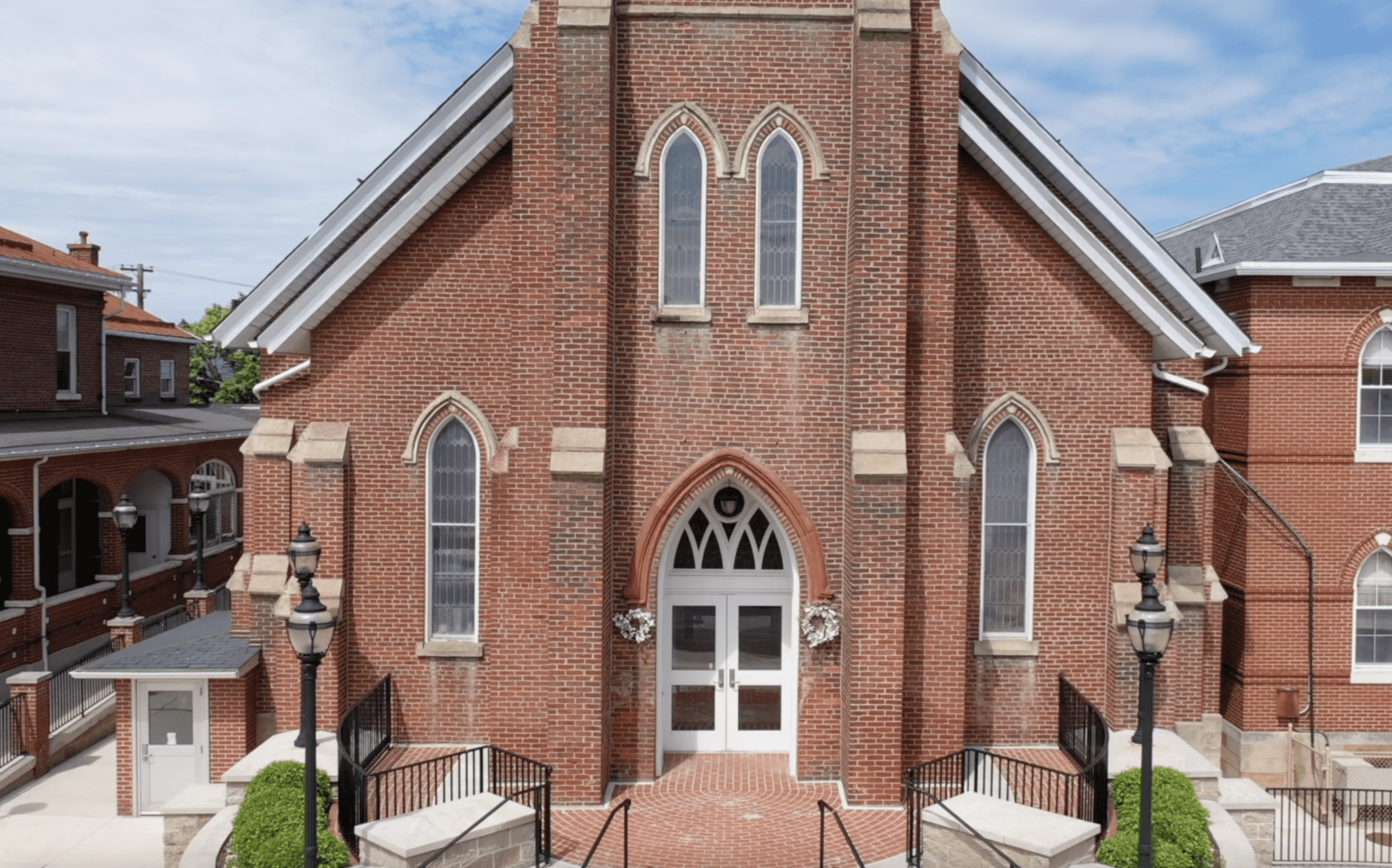Directions to St. Michael Church
History of St. Michael, Frostburg
The growth of the coal industry in Western Maryland attracted immigrants, many of whom were Irish Catholics, to the Frostburg area to work in the mines. The influx of these immigrants created a need for a full-time parish and priest in Frostburg. In late 1849 or early 1850, Rev. Michael Slattery came to Frostburg, the first priest to take charge of a regular congregation in Frostburg. Father Slattery purchased the old Highland Hall on the Old National Road (now US 40/Main St) and remodeled it. He transformed one wing into the first St. Michael’s Catholic Church and used the other wing as a pastoral residence.
The cornerstone for the present St Michael’s Church was laid on August 2, 1868, during the administration of Rev. Louis Morgan, St. Michael’s third pastor. The cornerstone was blessed and laid by the Very Rev. Edward Brennon of St. Patrick’s Church in Cumberland.
Father Morgan was succeeded by Rev. Valentine Schmitt who was named pastor of St. Michael’s in 1869. It was Father Schmitt who changed St. Michael’s from a mission church to a completely organized parish. He completed the building of the church and enriched it with the ornaments and vestments necessary for the dignified carrying out of the liturgy. It was also Father Schmitt who suggested placing the memorial to the Frosts, the founders of Frostburg, in front of the church where it still stands today. Upon completion of the church, Father Schmitt had the old Highland Hall removed and built the rectory in 1871.
In addition to building the church and rectory, Father Schmitt provided St. Michael’s with another important property, the parish cemetery. The original cemetery was behind the church where the hall now stands. Because it was becoming overcrowded. Father Schmitt purchased land on McCulloh’s Hill for the new cemetery. McCulloh’s Hill is now Mt. Pleasant Street.
St. Michael’s School was the creation of the sixth resident pastor, Rev Stephen J. Clarke. Father Clarke had a great love for children and began building the school. While the school was under construction, Father Clarke purchased property adjacent to the church and remodeled it as a residence for the sisters, a group of Ursuline nuns who were to teach at the new St. Michael’s School. Father Clark’s most outstanding achievement, St. Michael’s School, was opened in 1891 and continued operation until 2007.
During his eighteen-year tenure, Father Clarke was also responsible for the completion of the parish hall in 1912 and the parish school in Eckhart. One much-appreciated addition to the church was the installation of the pipe organ which was used for years in church ceremonies.
Rev. Francis E. Montgomery was named administrator of St. Michael’s in 1943 and during his tenure at St. Michael’s many renovations to the church occurred. The interior of the church was repainted, and the unsightly heating pipes were covered with wood paneling. In addition, new lighting and a new electric organ were installed. It was during Father Montgomery’s administration that the church steeple, which rose to the height of 175 feet, was deemed unsafe and replaced with the present one. In 1947, due to the increased enrollment of students from Eckhart and Garrett County, Father Montgomery opened the school cafeteria. He also had the stone wall built around the playground so that the school children would have a larger and safer playground.
On January 6, 1968, a fire destroyed the school. Following this disaster, Lawrence Cardinal Shehan, Father Montgomery, and the parish made the decision to remodel the school. The task of remodeling the school became the responsibility of Rev. John Reinsfelder who was named pastor of St. Michael’s in 1968. His commitment to a Catholic education for the parish children was evident in his devotion to the school, not only during the years it was being remodeled, but throughout his entire pastorate.
St. Michael School closed its doors in 2008 after serving the community for over 115 years. The buildings were sold to the Frostburg Museum Association to serve as a new location for the museum. St. Michael Hall was condemned and demolished in 2015 after significant damage was found within the structure. The site was sold to the city and now serves as a public parking area. A historical marker in the parking lot celebrates the history of the Hall in text and photographs.

